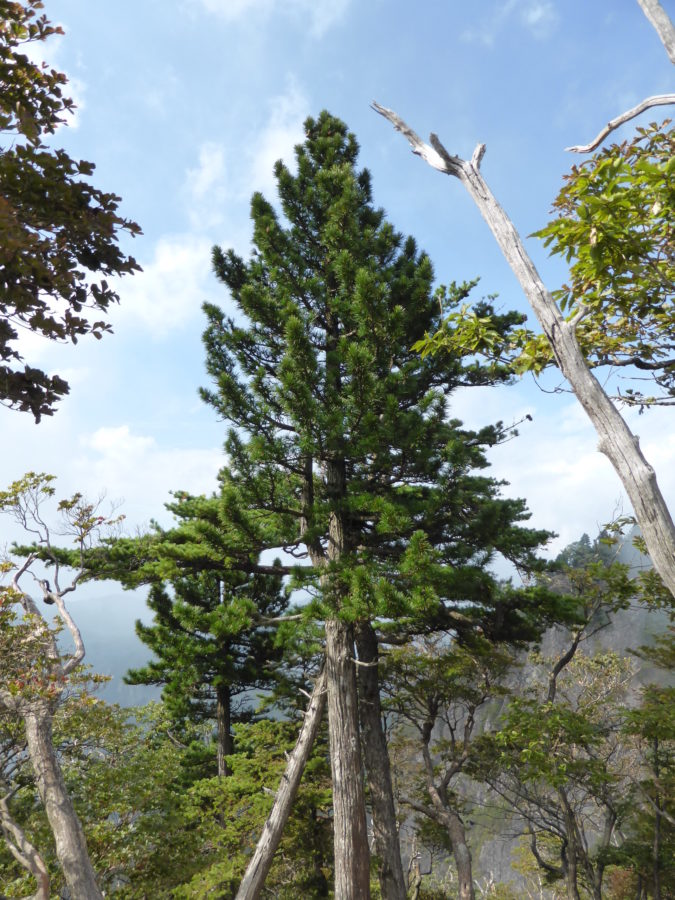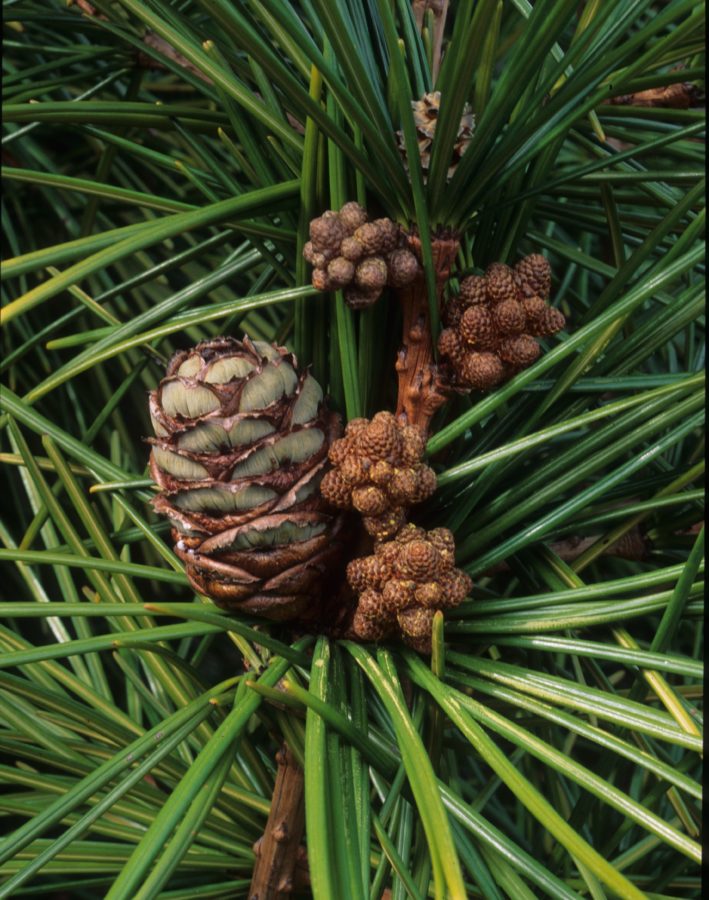Sciadopityaceae
Sciadopitys verticillata
A monotypic family whose sole species is restricted to Japan. Past logging and landuse changes have led to a fragmented population where most remaining stnads have less than 100 individuals
Human Uses
The durable wood of this species is used for construction purposes and to a limited extent for boat building and certain kinds of furniture. The fibrous bark was formerly used for caulking boats (oakum). Its most valuable commercial use is undoubtedly in the horticultural industry, as it is a popular planted tree in Japan and (more limited) in Europe and the USA. Apparently it was not introduced in China, as were a few other Japanese conifers such as Cryptomeria japonica. The Dutch, who were the only Europeans allowed to trade with Japan, brought it to Java early in the nineteenth century; it arrived successfully in England and the Netherlands in 1861. A small number of cultivars with dwarfed growth, variegated foliage and/or pendulous branches has been developed but these are rarely planted. Some of these seem to scarcely differ from the species
References and further reading
- Katsuki, T., Luscombe, D & Farjon, A. 2013. Sciadopitys verticillata. The IUCN Red List of Threatened Species 2013: e.T34111A2846623. http://dx.doi.org/10.2305/IUCN.UK.2013-1.RLTS.T34111A2846623.en. Downloaded on 13 July 2017
- Worth, J., S. Sakaguchi, N. Tanaka, M. Yamasaki & Y. Isagi 2013. Northern richness and southern poverty: contrasting genetic footprints of glacial refugia in the relictual tree Sciadopitys verticillata (Coniferales: Sciadopityaceae). Biological Journal of the Linnaean Society 108:263-277.
- Worth, J., M. Yokogawa & Y. Isagi 2014. Outcrossing rates and organelle inheritance estimated from two natural populations of the Japanese endemic conifer Sciadopitys verticillata. Journal of Plant Research 127:617-626.
- Worth, J., M. Yokogawa, A. Perez-Figueroa, Y. Tsumura, N. Tomaru, J. Janes & Y. Isagi 2014. Conflict in outcomes for conservation based on population genetic diversity and genetic divergence approaches: a case study in the Japanese relictual conifer Sciadopitys verticillata (Sciadopityaceae). Conservation Genetics:DOI 10.1007/s10592-014-0615-y.
- Yumoto, T. 2011. Historical Perspectives on the Relationships Between Humanity and Nature in Japan. S.-K. Hong, et al. (eds.), Landscape Ecology in Asian Cultures. Ecological Research Monographs, DOI 10.1007/978-4-431-87799-8_1 pp. 3-10









